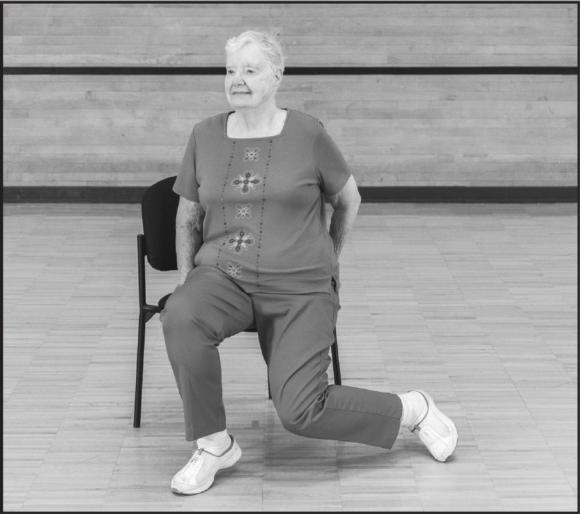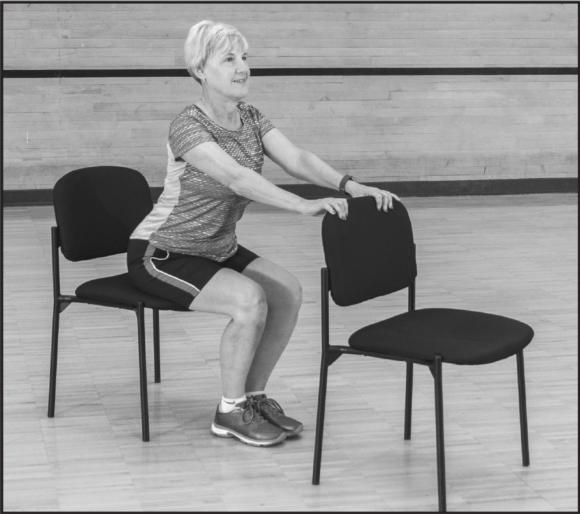Feel-good moves modified for chair-based sessions
This is an excerpt from Methods of Group Exercise Instruction 4th Edition With Online Video by Mary M Yoke,Carol Armbruster.
Note: A feel-good move is literally supposed to feel good right in the moment—not later. Therefore, a move such as a squat, which strengthens muscles around the knee joint and may help reduce pain once the muscles are stronger, is not technically a feel-good move as it is generally not perceived as pleasant in the moment, especially by those with knee pain. When leading participants through feel-good moves, encourage them to close their eyes and find just what their bodies need right now; help them to find moves that bring relief and pleasure.
- Sun breaths: While sitting in chair, slowly inhale while circling arms out and up to the ceiling then exhale while circling them back down, tracing a “sun” around the body. Repeat 3 to 5 times.
- Shoulder rolls: Simply sit and roll shoulder blades up, back, and down, emphasizing the backward and downward moves. (It's best to avoid rolling forward, as most participants hunch forward already). Encourage deep, slow breathing—inhaling as shoulder blades elevate, exhaling as they press down.
- All-fours: cat tilt or dog tilt, lateral flexion, pelvic rotation, thread the needle: Modify in the chair by tilting the pelvis anteriorly and posteriorly (emphasizing the anterior tilt and spinal extension), then by rocking the pelvis laterally, and finishing with circling the pelvis and rib cage. All moves should be performed slowly with deep, conscious breathing.
- Seated windshield wipers into spinal twist, shoulder circles: Modify by sitting on the edge of the chair and allowing both knees to slowly relax left then right (hips will be internally and externally rotating in the horizontal plane). After a few comfortable repetitions, hold to one side and add a gentle spinal twist while holding onto the chair to prevent falling (see figure 9.2). Repeat on other side. To this, you can add a feel-good move for the shoulders and arms, reaching across to the side, front, up, or wherever feels good to the participant.

Figure 9.2 Windshield-wiper move on chair.
- Prone baby cobra: Modify on the chair by having participants lean forward and place their hands (or elbows) on the back of a chair in front of them. Gently press into a small range of spinal extension (see figure 9.3).

Figure 9.3 Spinal extension on chair.
- Ankle moves: While sitting, lift legs and slowly roll ankles in complete circles—one direction then the other. Then fully dorsiflex ankles, pressing heels away as far as possible. Even though participants will most likely be wearing shoes, ask them to see if they can press the balls of their feet out (as if they were standing and performing a heel raise) and then fully plantarflex, pointing the toes. Repeat. Finish with more ankle rolls or figure eights.
![]() See online video 9.1 for feel-good moves modified for chair-based sessions.
See online video 9.1 for feel-good moves modified for chair-based sessions.
SHOP

Get the latest insights with regular newsletters, plus periodic product information and special insider offers.
JOIN NOW
Latest Posts
- Using double inclinometers to assess cervical flexion
- Trunk flexion manual muscle testing
- Using a goniometer to assess shoulder horizontal adduction
- Assessing shoulder flexion with manual muscle testing
- Sample mental health lesson plan of a skills-based approach
- Sample assessment worksheet for the skill of accessing valid and reliable resources


